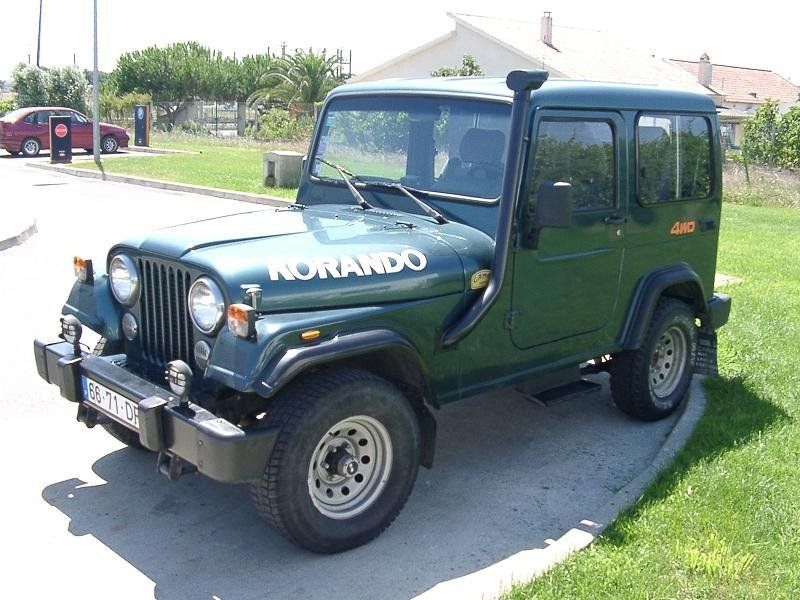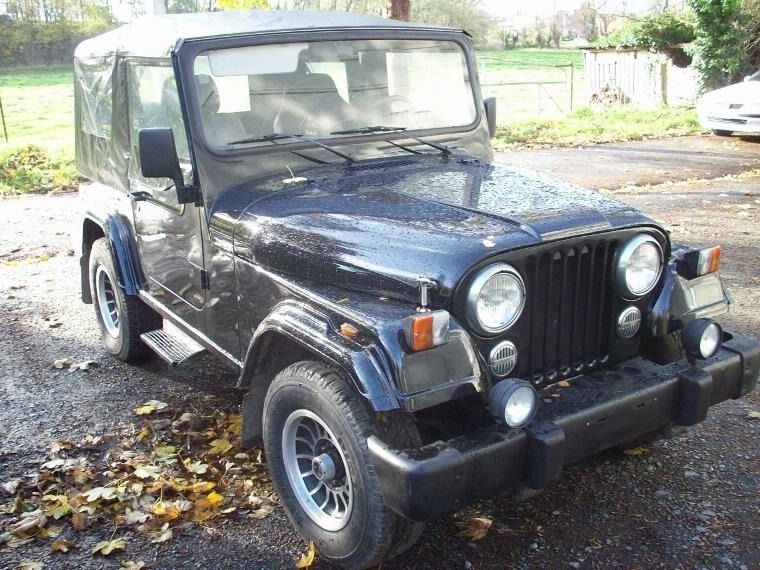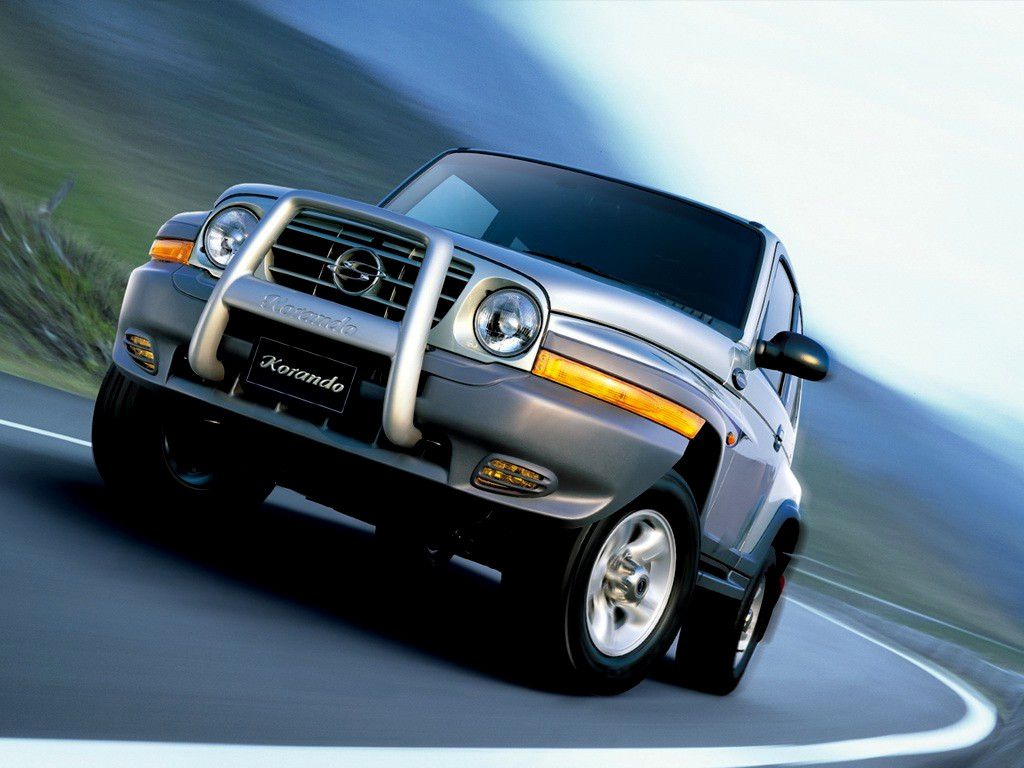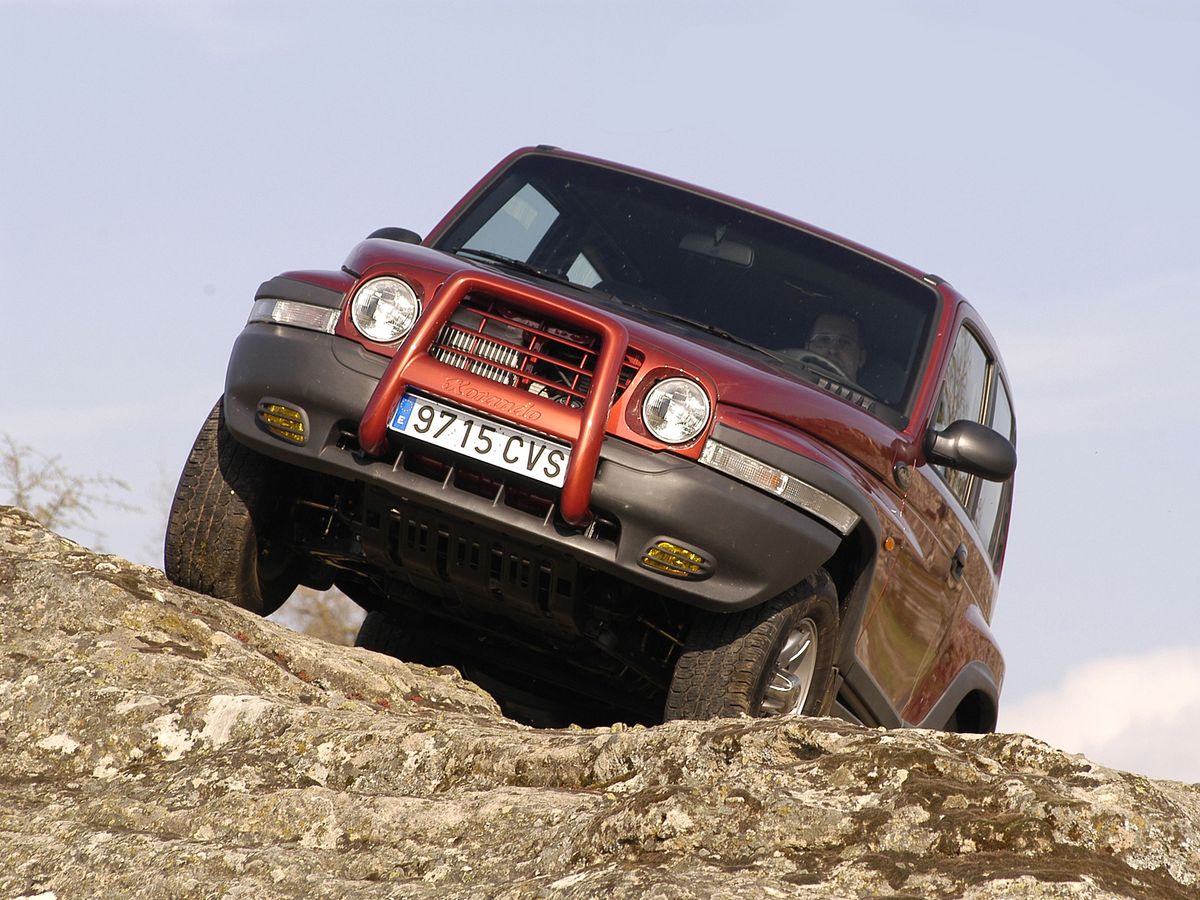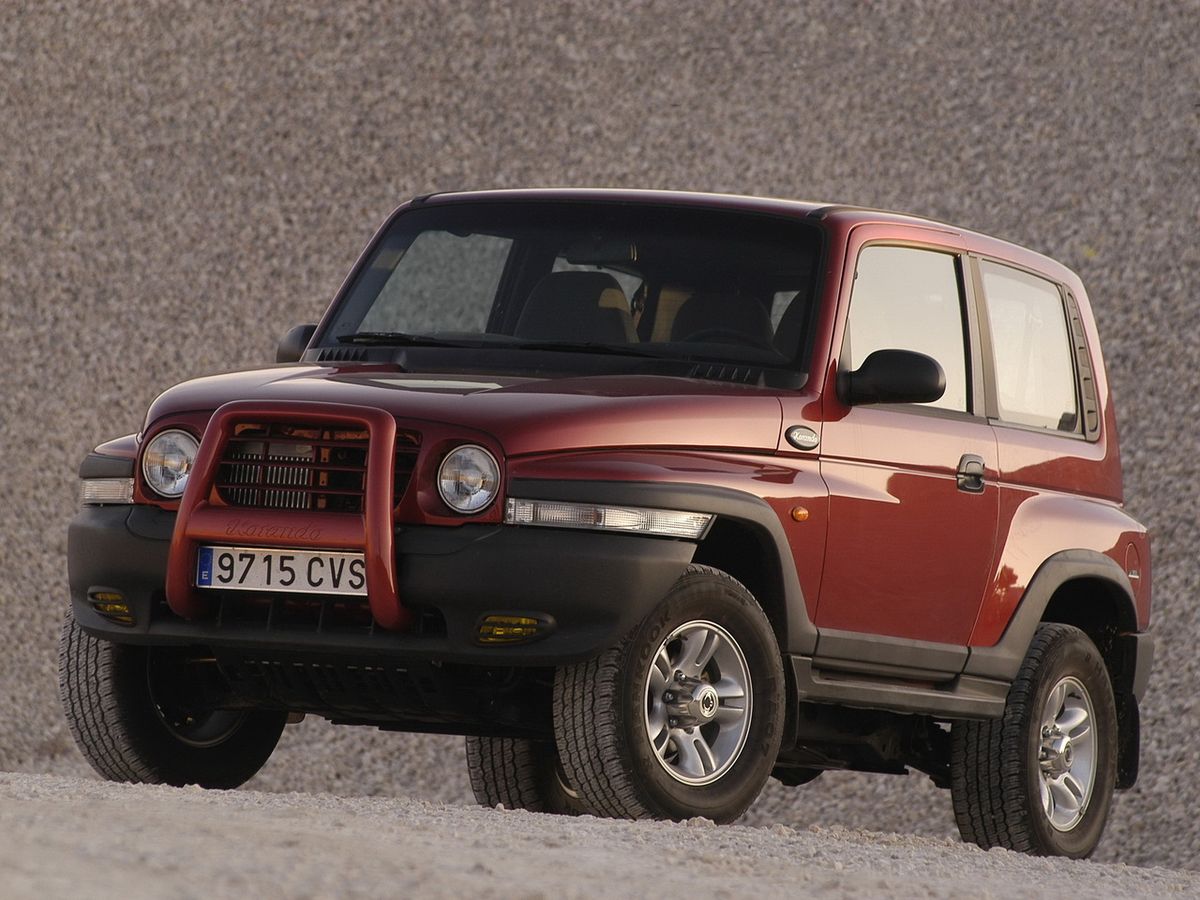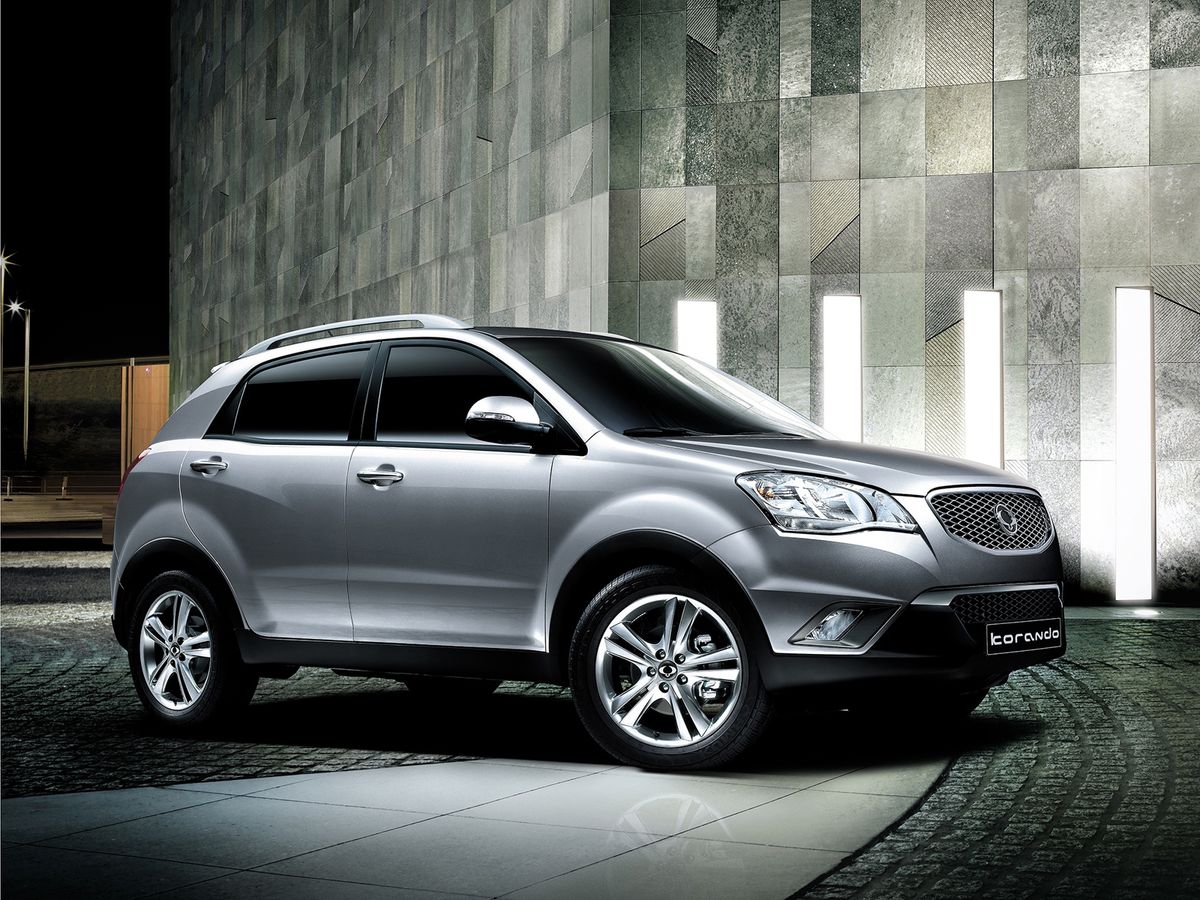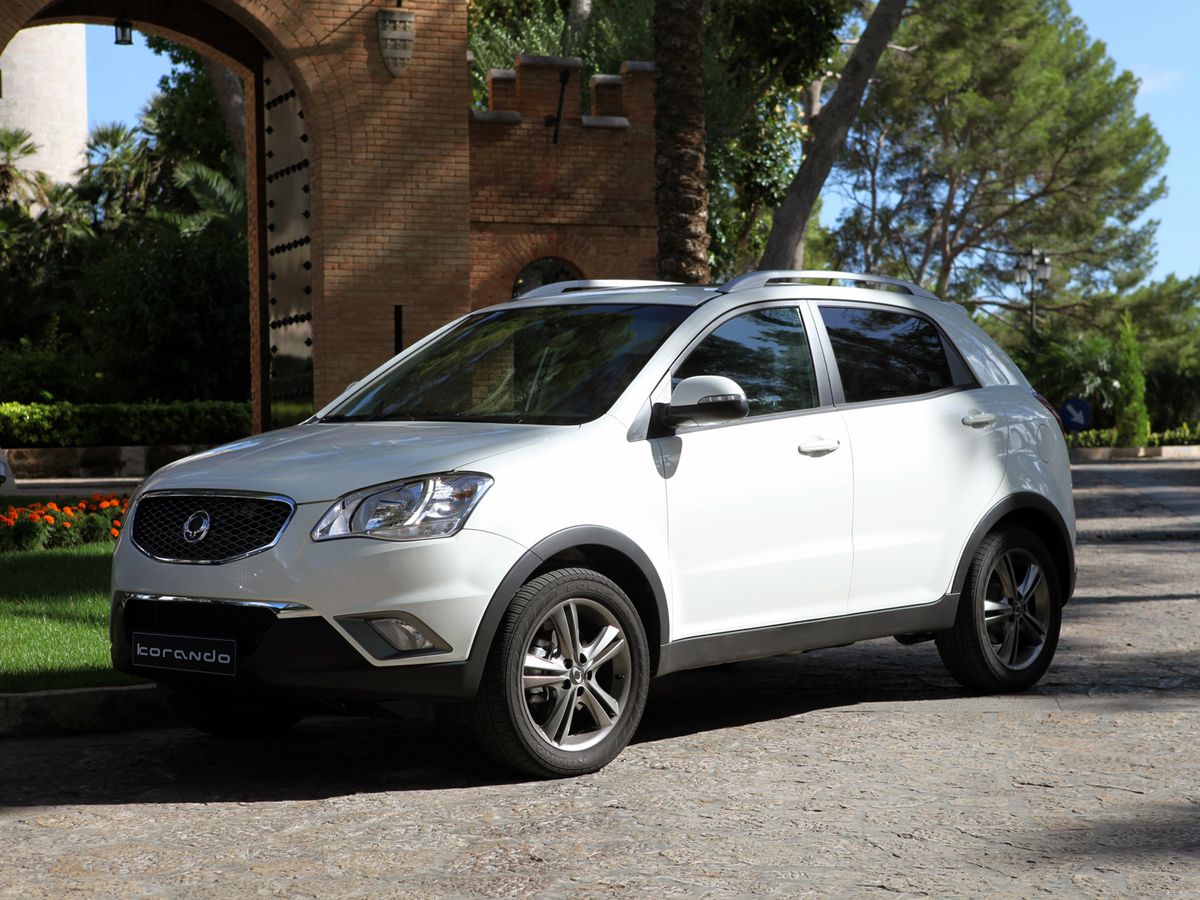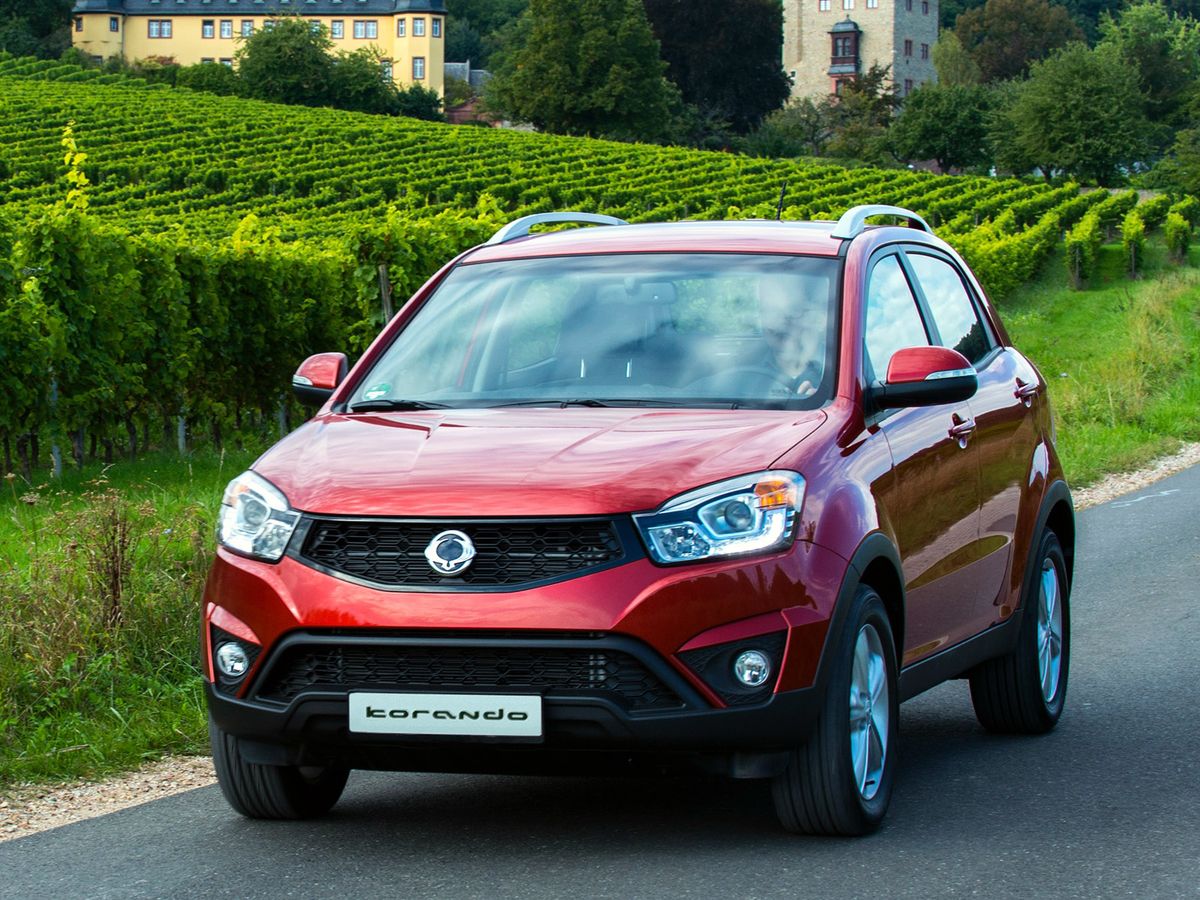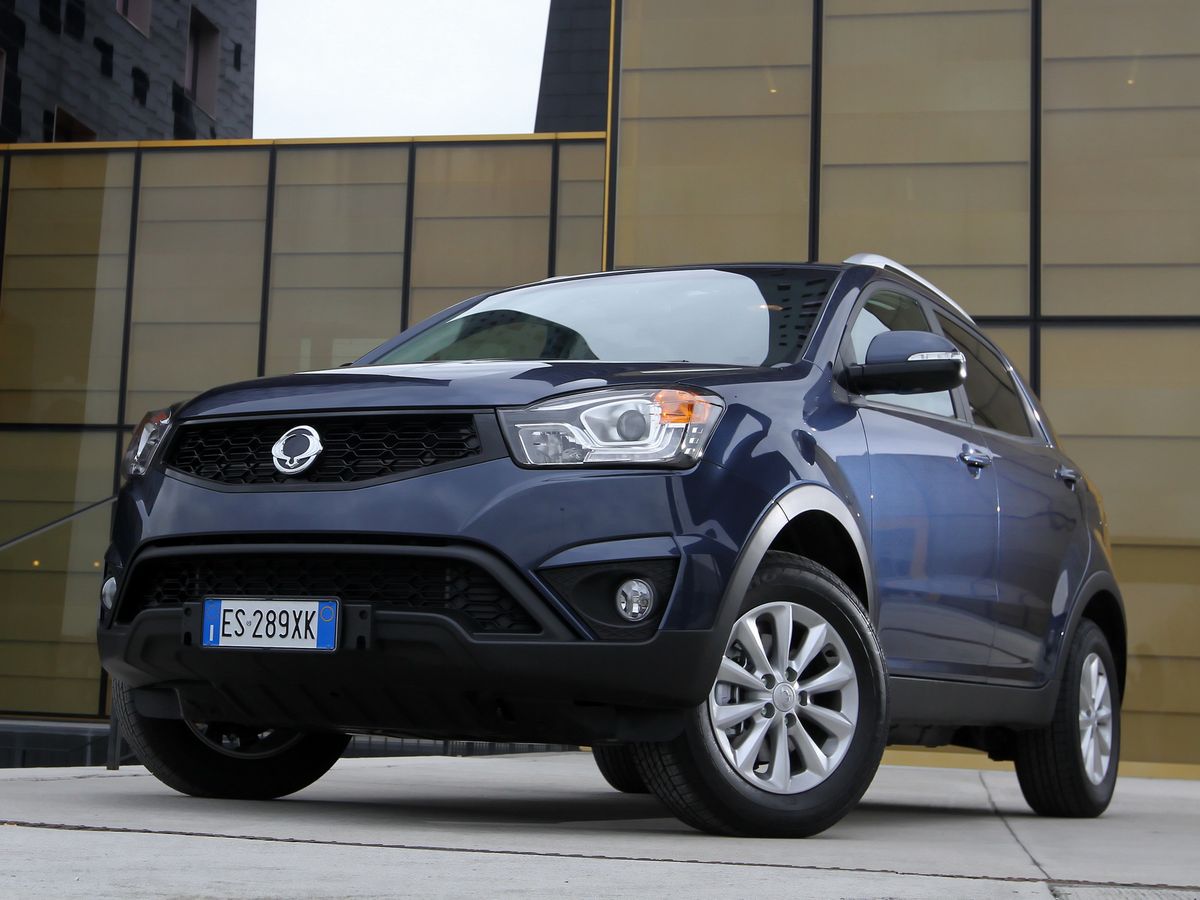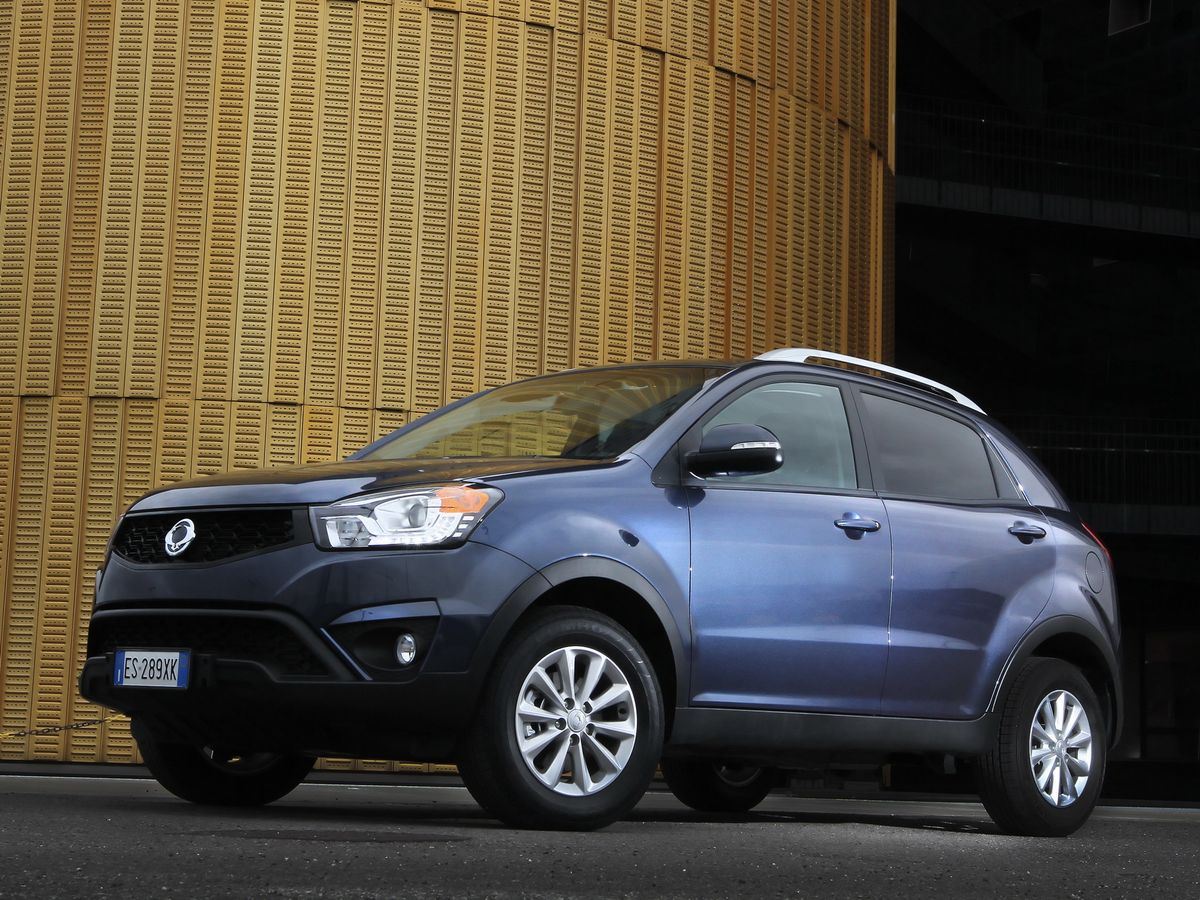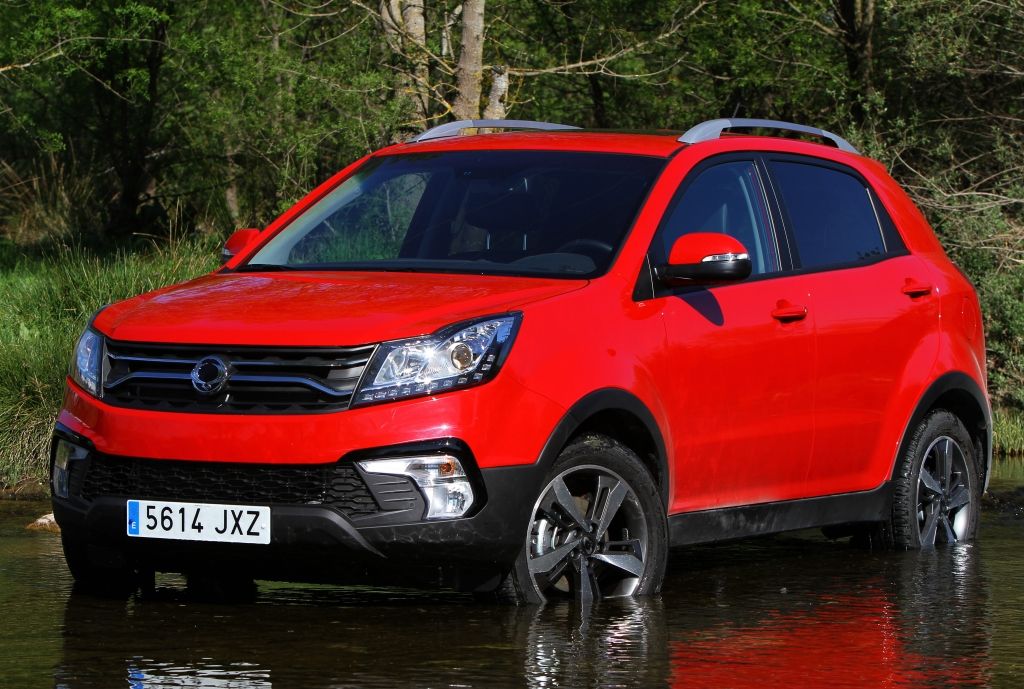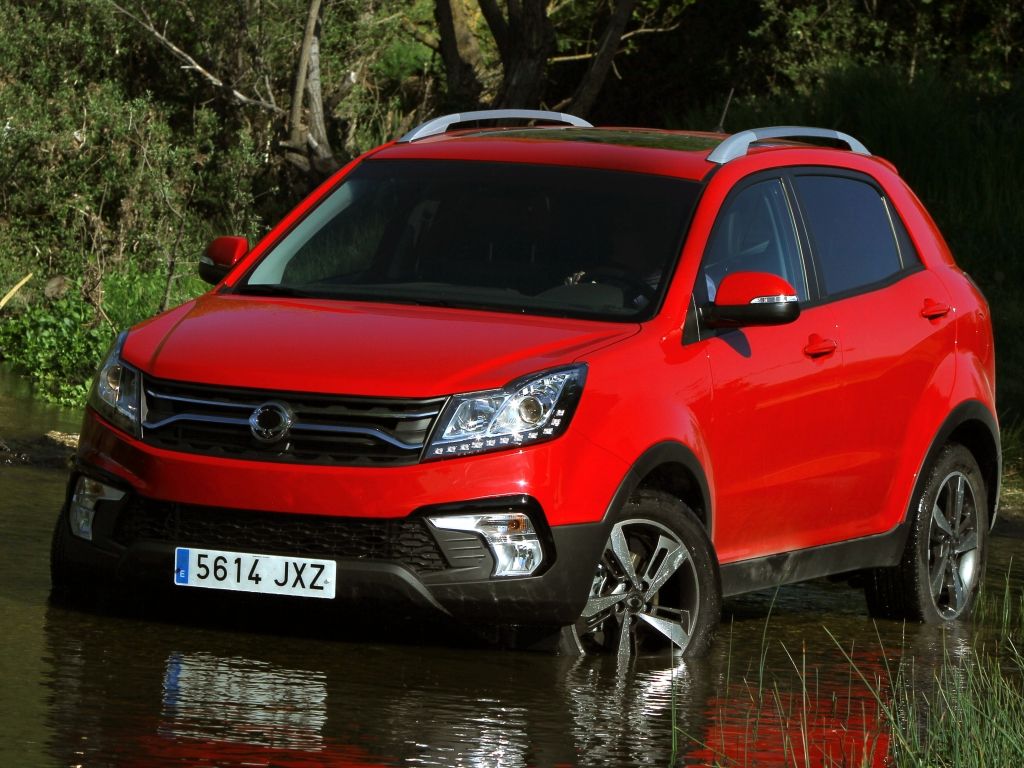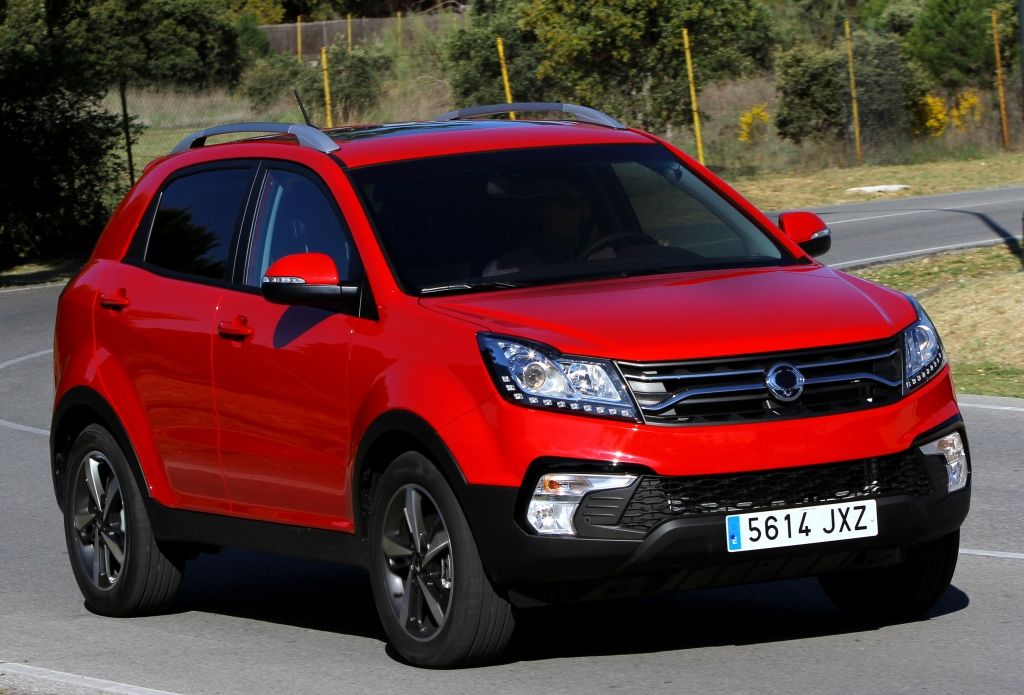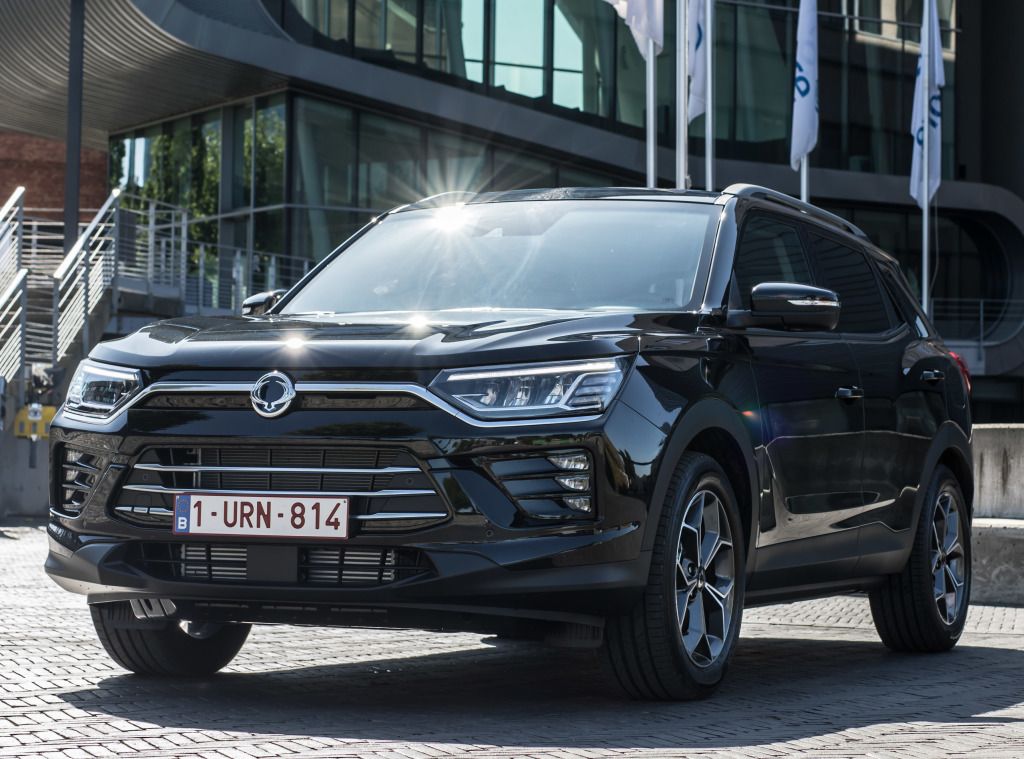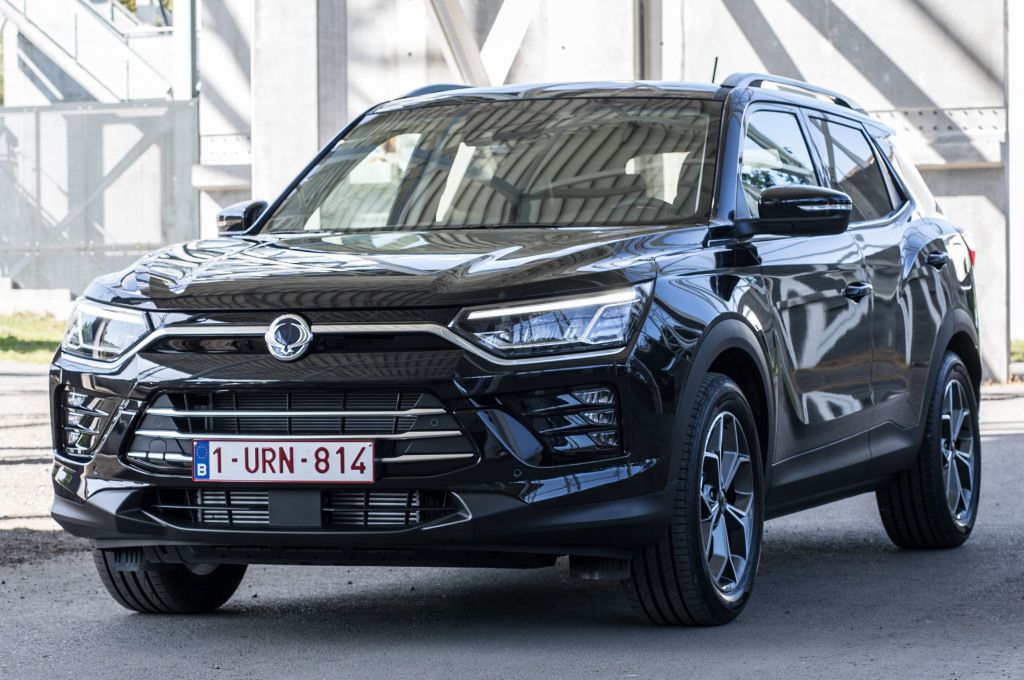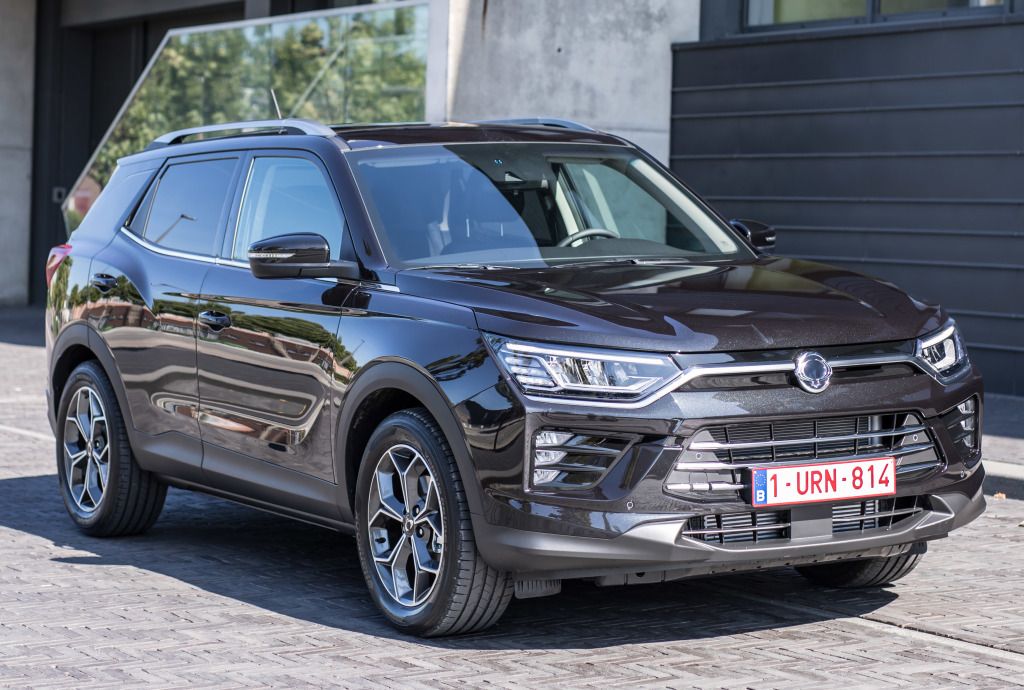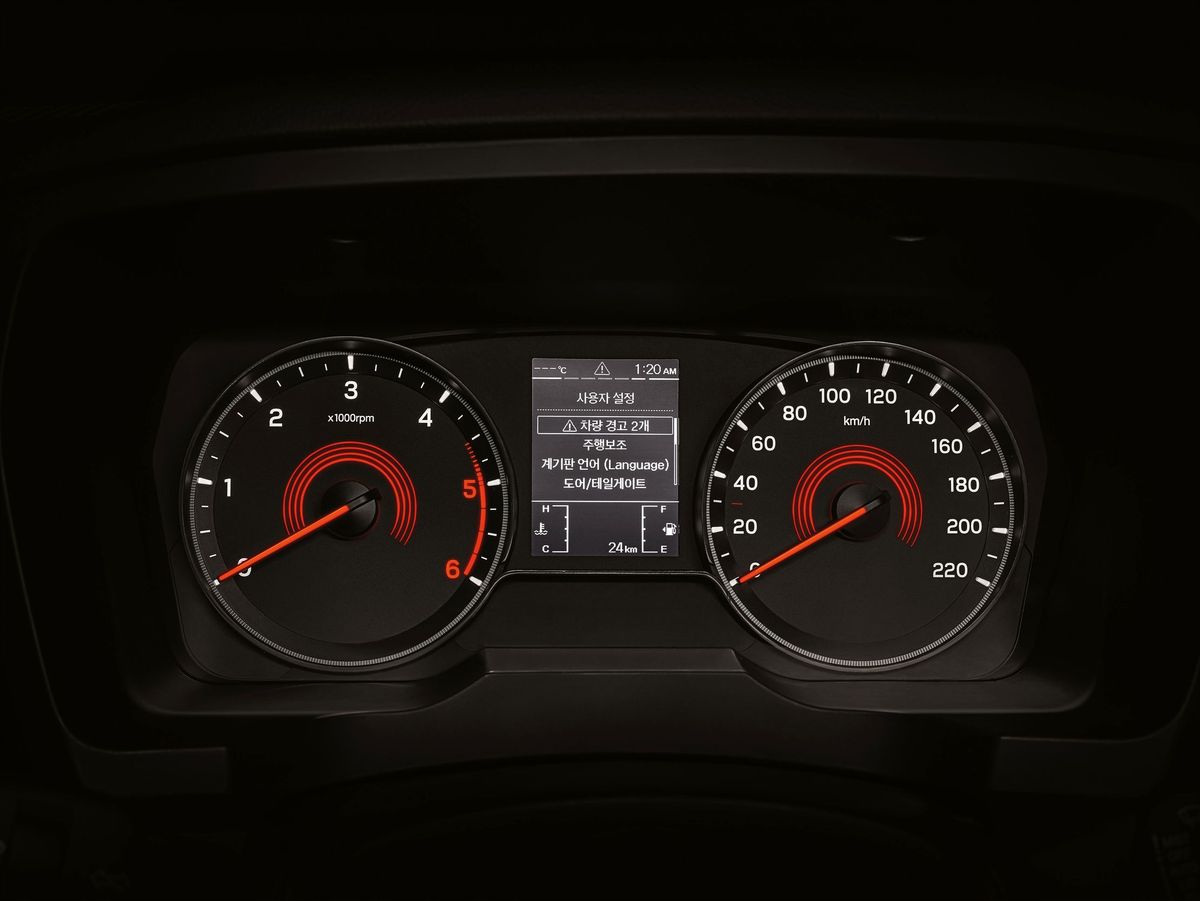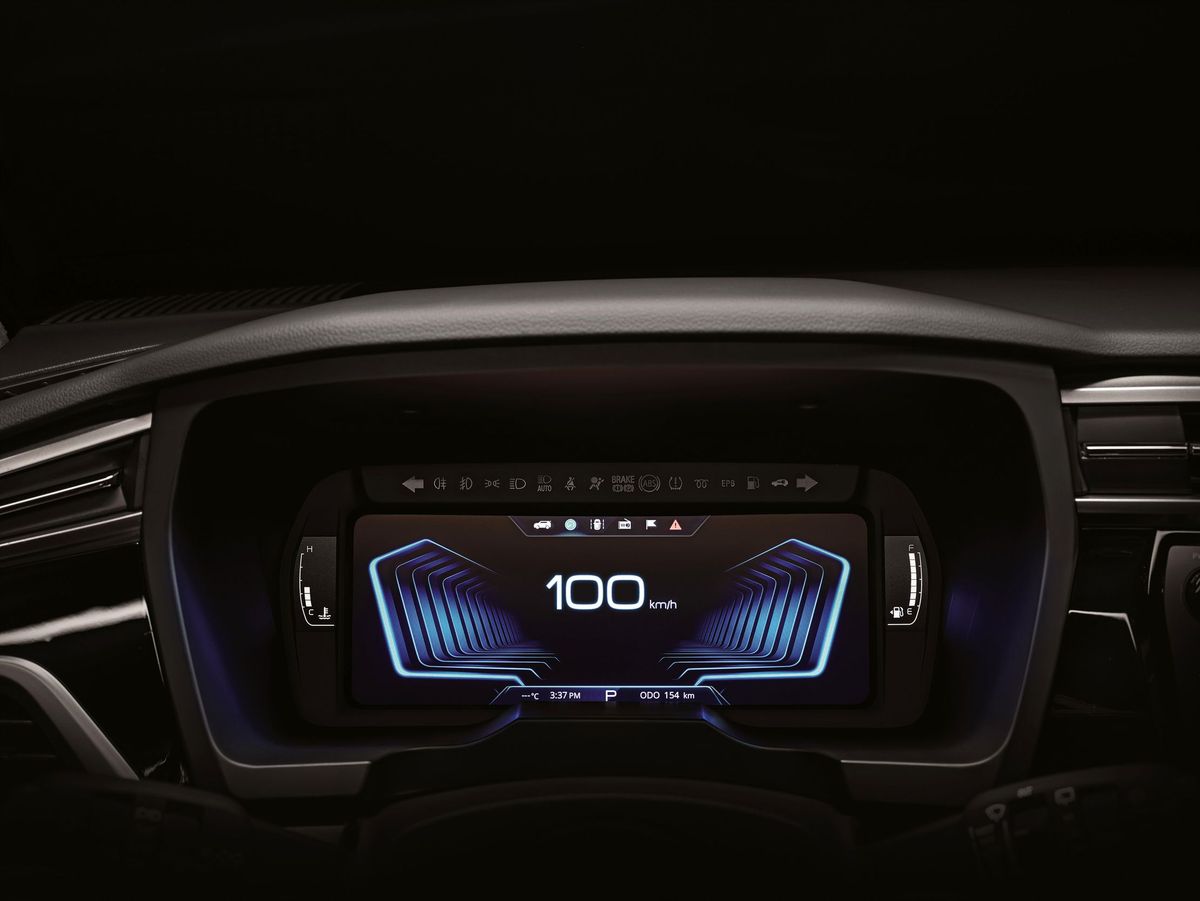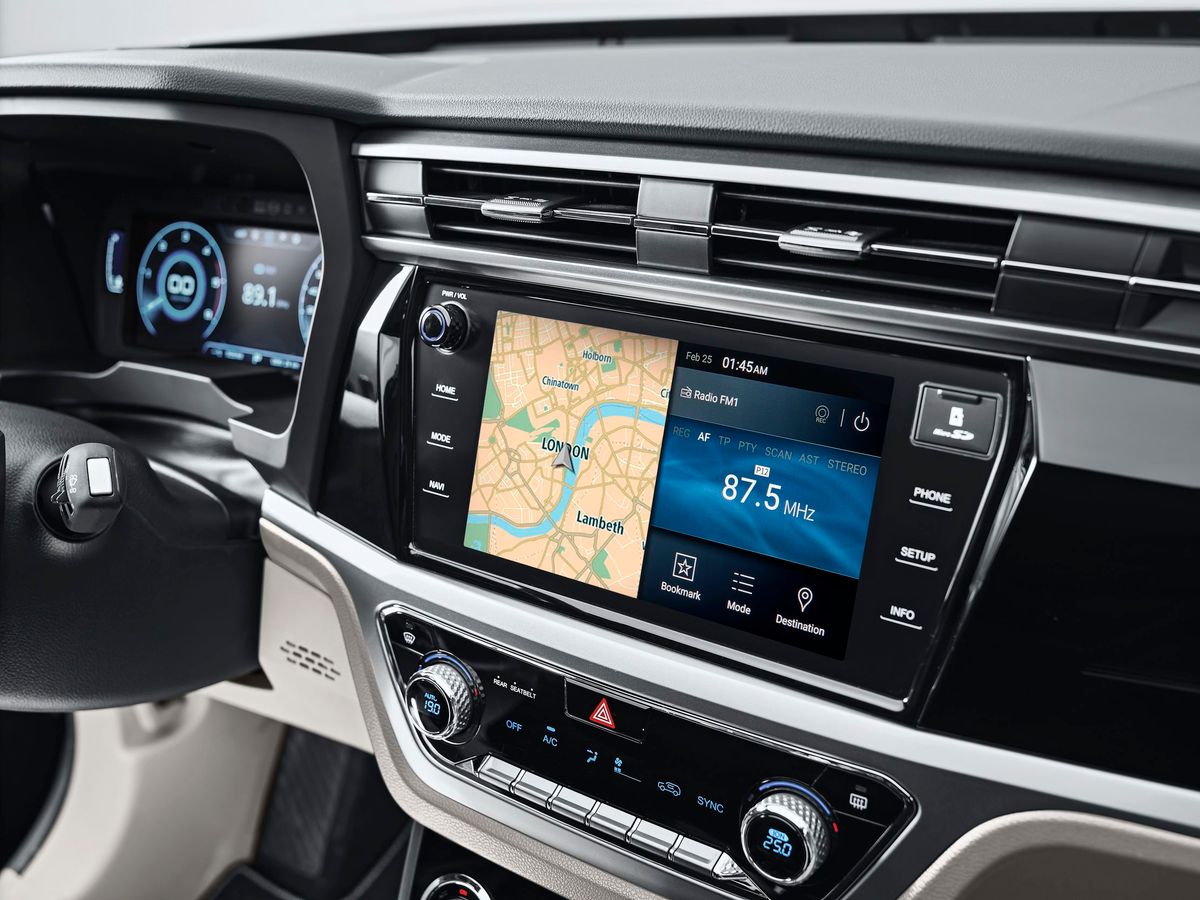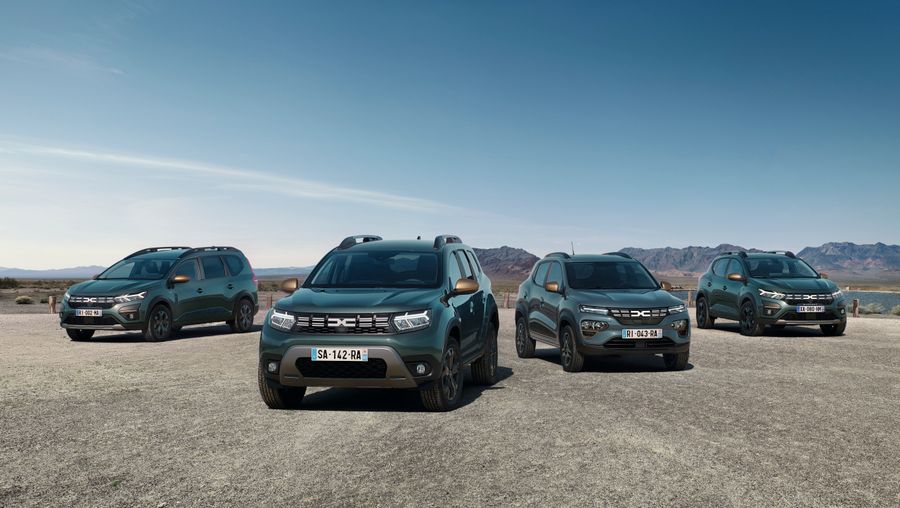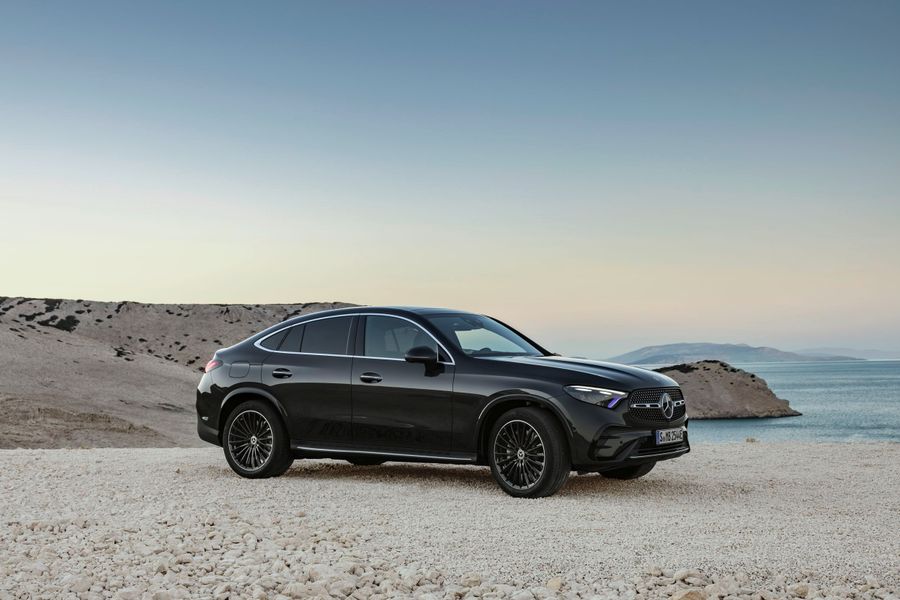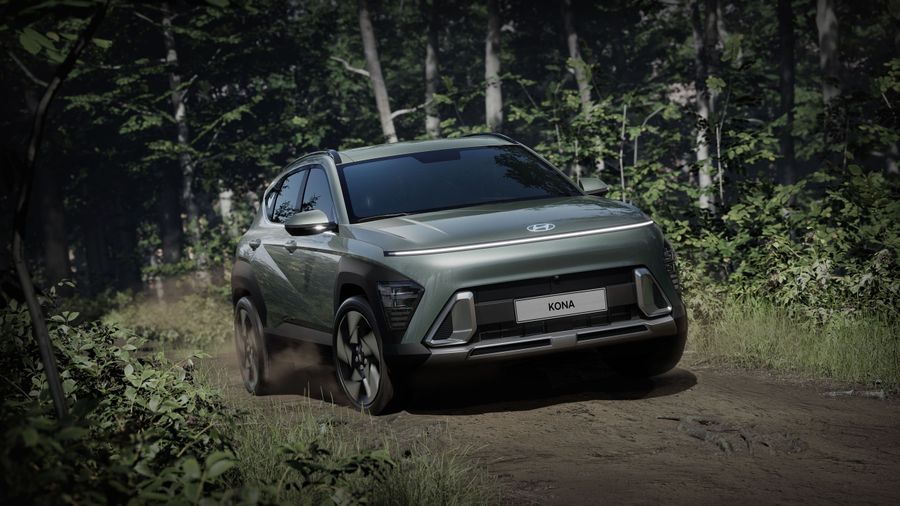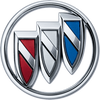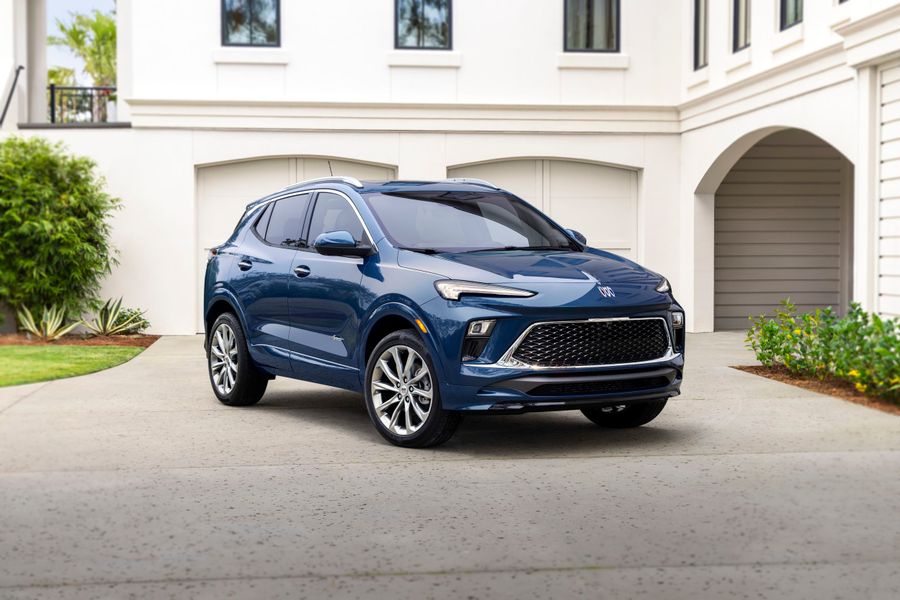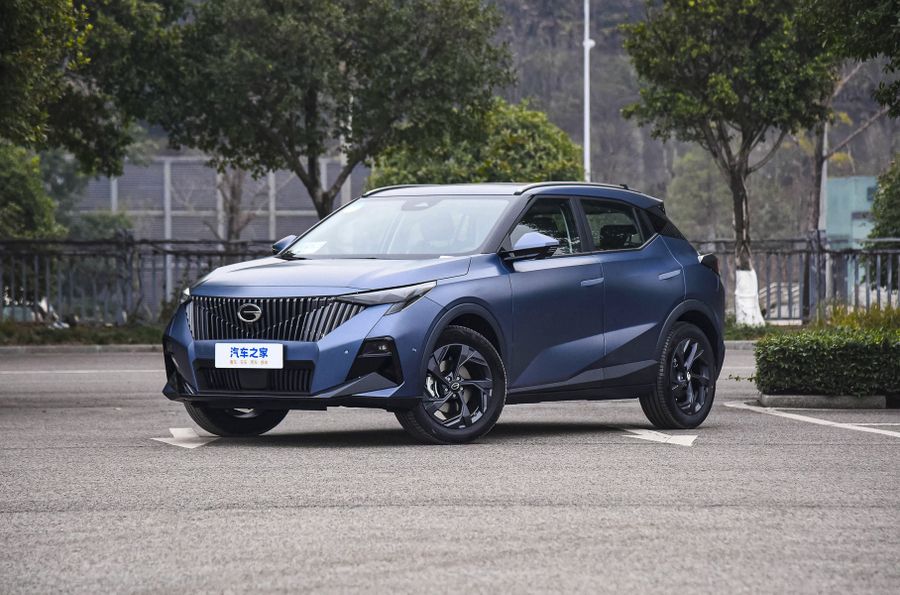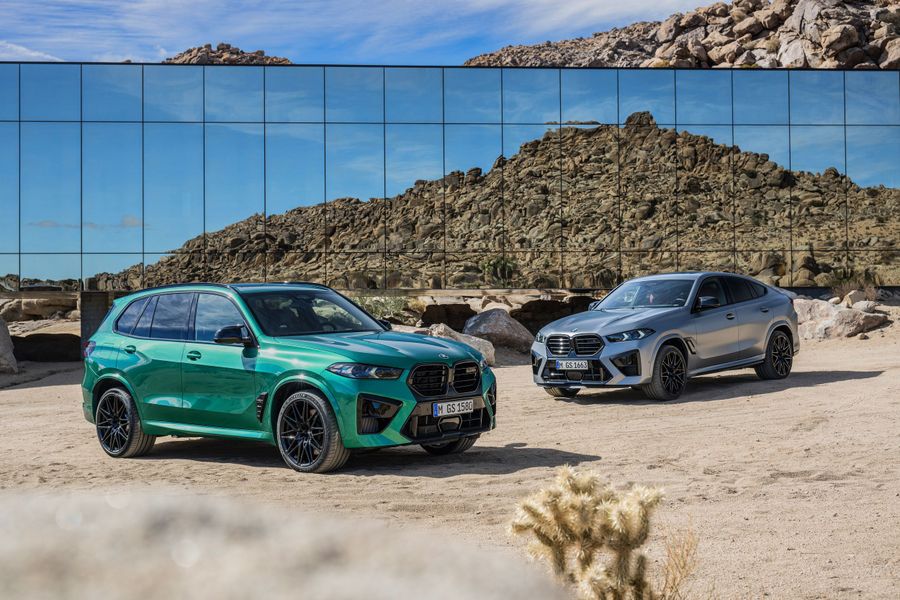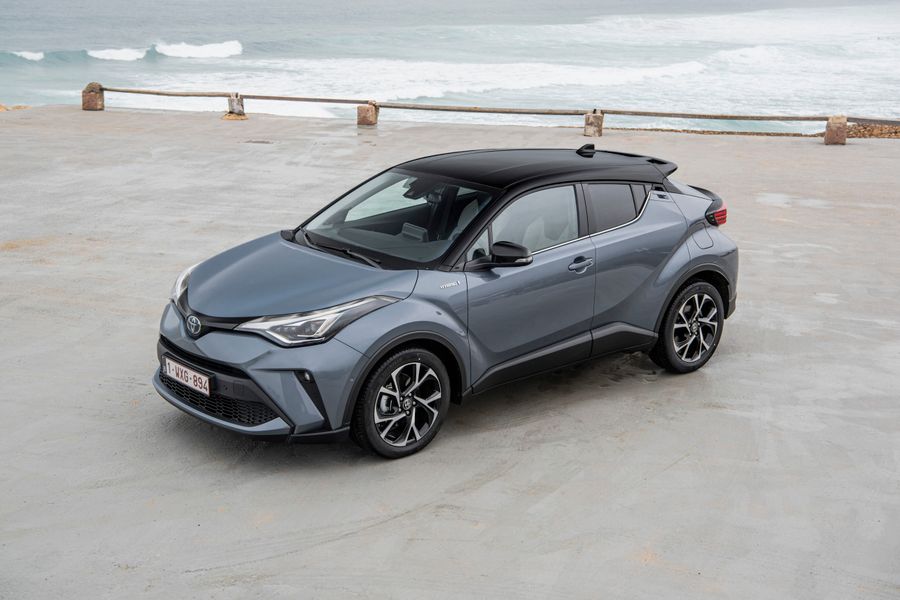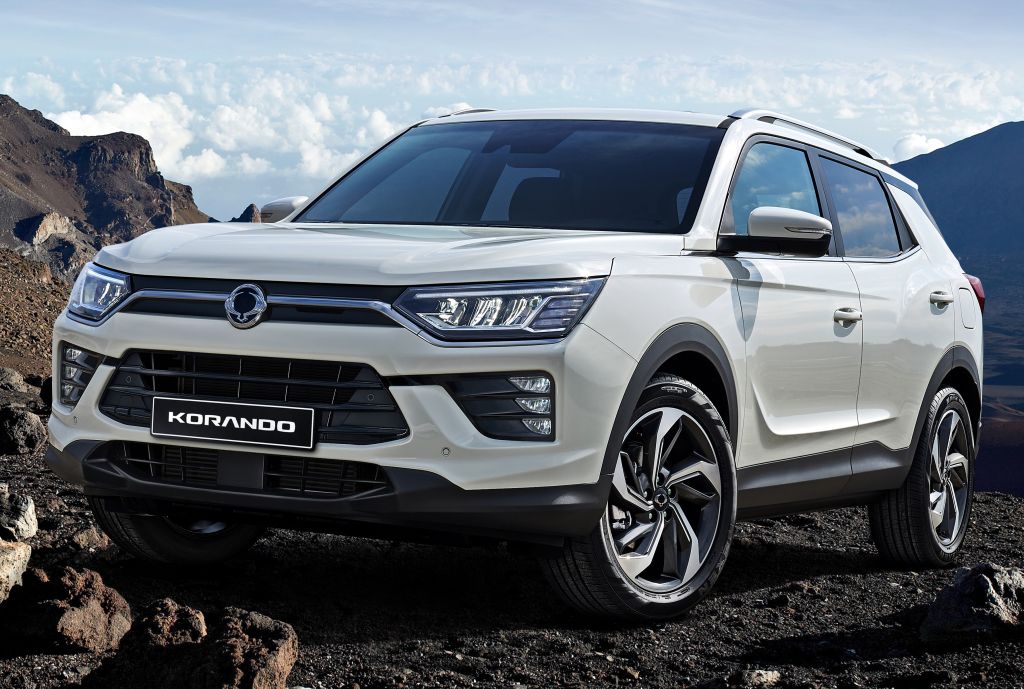
From jeep to crossover SUV
The SsangYong Korando is a compact crossover SUV produced by the South Korean company SsangYong since 1983. In 2021, Israeli buyers can purchase the fourth generation of the 2019 crossover SUV with two turbocharged engines to choose from (petrol and diesel) and a six-speed Tiptronic gearbox (automatic transmission with manual mode).
The first generation
It was produced from 1983 to 1996. The first generation SsangYong Korando is a licensed copy of the Jeep CJ-7, shown by Keohwa Co., Ltd. at the Seoul International Trade Fair on September 24, 1982. The name of the SUV comes from the abbreviation of the phrase ‘Korean can do!’. In 1985, the company was acquired by Dong-A Motor, followed by integration into the Ssangyong Business Group and the formation of SsangYong Motor Company in 1988. In fact, this vehicle is the first SUV in the SsangYong model range and is a classic three-door SUV with a short or long wheelbase. The first Korando was equipped with petrol or diesel engines with 68 to 120 hp.
There were many modifications of the vehicle: standard 4- or 5-seater SUVs, 4-seater versions with an open body (Canvas Top), vans (Van and Van Truck). The 9-seater version of the SUV was very interesting: it had an extended wheelbase and a spacious passenger and cargo compartment. In 1990, the company launched a well-equipped version of the Korando Deluxe, which was offered in 4-, 5-, 6- and 9-seater variants. It was equipped with air conditioning, central locking and was veneered. The 1993 Korando with the Off Road Express package was distinguished by better exterior and superb equipment.
The first Korando is a great SUV with a solid suspension, transmission and sturdy frame. Due to its low price, the model aroused genuine interest and was sold in various markets, including Europe.
The diesel engines that were installed on the first generation SsangYong Korando had a high enough torque to drive calmly and confidently off-road. The most popular was the Isuzu 2.2 liter engine (RS) with 68 hp (135 Nm). Another option was the model with a 79-hp (155 Nm) 2.5-liter Peugeot diesel engine (RV). But petrol modifications of the RX 2.6i were also produced, equipped with the Isuzu injection engines with 120 hp (196 Nm), and the maximum speed was 162 km/h, while diesel versions could provide no more than 148 km/h. Only the manual transmission was available.
With the exception of some differences in engines and transmission units, the rest components of the SsangYong Korando were the same as those of the Jeep CJ-7. The frame and body were similar. The wheelbase was about 2.4 meters, like the CJ-7; while the long version was about 2.9 meters. Solid axles were installed at the front and rear. Small overhangs allowed the short-wheelbase SUV to easily overcome steep slopes.
The first Korando is a great SUV with a solid suspension, transmission and sturdy frame. Due to its low price, the model aroused genuine interest and was sold in various markets, including Europe. Due to the low-power engines, it took a bit more time for the vehicle to accelerate, but it was excellently adapted to driving on rough terrain and was quite fuel-efficient compared to its American prototype.
The second generation
It was produced from 1996 to 2006. The new Korando was built on a shortened version of Musso’s chassis, which was designed by the British designer Ken Greenlee, a college of fine arts professor who previously worked with Aston Martin and Bentley. He was also entrusted with the creation of the exterior of the new model, which turned out to be original, somewhat ambiguous, but eye-catching and memorable. The vehicle was equipped with licensed Mercedes engines: 2.3 and 3.2 liter petrol or 2.3 and 2.9 liter diesel engines.
The second generation SsangYong Korando was still a 3-door vehicle, which was produced in a closed body variant or with a fabric roof, as commercial van and even as a truck. In addition to the original exterior style, the Korando had an unusual interior with a symmetrical front panel: on the passenger side, there was the same arched visor as at the driver’s dashboard, which made it possible to produce the car in a right-hand drive version with minimal investment. The standard equipment included a hydraulic booster and a height-adjustable steering column, driver’s seat height adjustment, central locking, electric mirrors and power windows, air conditioning. Expensive versions had wood trim, sunroof.
According to the owners, the Korando had an excellent cross-country ability, good maintainability, good driving performance, and a frame.
The second Korando was equipped with a whole range of petrol and diesel engines. A 3.2-liter inline 6-cylinder engine (209-220 hp) was the most powerful. It was equipped only with a 4-speed automatic transmission, while other engines were available with both an automatic and a 5-speed manual transmission. Another version of the petrol version was a 2.3-liter four-cylinder engine with 150 hp. Diesel versions included: 2.3 liter 4-cylinder engine with 79-101 hp and a 2.9-liter 5-cylinder naturally aspirated (98 hp) or turbocharged (129 hp) engine. All engines were considered sufficiently high-torque, reliable and resourceful, but the least problematic unit was still the 3.2 l petrol engine, although this was a rather glutton for fuel option.
The Korando had an independent torsion bar suspension at the front and a continuous axle beam with springs at the rear. It was equipped with a part-time all-wheel drive system with an underdrive. The greatly equipped Korando E32 had a Full-time all-wheel drive system and a low range. The height of the ground clearance was about 20 cm, and the vehicle was also equipped with a metal protection for the oil sump.
The standard equipment included a driver’s airbag, anti-lock braking system. The Korando E32 was also fitted with traction control as standard. The vehicle body was designed in accordance with the new passive safety regulations. In 2004, the vehicle was modernized and produced until 2006. According to the owners, the Korando had an excellent cross-country ability, good maintainability, good driving performance, and a frame. But the vehicle had a small trunk, plus there were problems related to the availability of spare parts and corrosion.
The third generation
It was produced from 2010 to 2019, and was restyled twice: in 2013 and 2017. Since 2010, the manufacturer started producing a compact SUV under the name Korando, while in some countries it was known as Actyon. It was a very modern SUV designed by the great Italian designer Giugiaro. The new Korando, which had nothing with the previous one, had a monocoque body, independent suspensions of all wheels. It was compact in size, but also quite spacious inside. The front or all-wheel drive versions were available.
In all-wheel drive models, the rear pair of wheels was connected via a GKN multi-plate clutch. When driving under normal conditions, the vehicle switched to automatic mode, becoming predominantly mono-drive. However, in case of a front wheels bond failure, the electronics using the wheel sensors switched to all-wheel drive. For difficult conditions (loose snow, slippery roads), there was the Lock mode, which distributed the torque equally between the front and rear wheels.
The third Korando was a very modern SUV designed by the great Italian designer Giugiaro. The new Korando, which had nothing with the previous one, had a monocoque body, independent suspensions of all wheels. It was compact, but also quite spacious inside.
The two-liter petrol engine was of the company’s own production. Plus, there was a modernized Mercedes diesel engine of the same volume with a common rail system and two boost options: 150 or 175 hp. The standard 6-speed manual transmission was offered along with the 6-speed automatic transmission. As for fuel-efficiency and performance, the 175-horsepower diesel version was considered the best, as it consumed about 6.1-7.5 liters of fuel per 100 km in the combined cycle, at the same time, its maximum speed reached 180-187 km/h, and it took about 10-11.5 seconds to accelerate to 100 km.
The chassis of the third generation SsangYong Korando was typical for the class: the MacPherson strut at the front and a multi-link suspension at the rear, as well as wheel disc brakes. It had a spacious trunk of 486 liters, which could turn into 1,312 liters with the seats folded down. Standard equipment included six airbags, ABS with electronic brake force distribution (EBD), and cruise control. The electronic stability control system was complemented by an active roll-over prevention program.
2013 restyling
The upgraded crossover SUV acquired new LED headlights and a more elegant false grille. The cutout of the lower air intake became bigger, and the fog lamps became round. There were new LED lights at the rear. A significant part of the changes covered the interior: the front panel was thoroughly redesigned, becoming more functional and more advanced.
In 2016, instead of a 2-liter diesel engine, the vehicle acquired a new 2.2-liter e-XDI turbo diesel engine with 178 hp coupled with a 6-speed manual transmission or a 6-speed automatic transmission by Aisin. Fuel consumption outside the city ranged from 4.6 to 5.8 liters of fuel per 100 km, depending on the transmission and drive; in the urban cycle - 6.5-8.7 l per 100 km.
The SsangYong Korando became a compact crossover SUV with a body length of 4,410 mm, a wheelbase of 2,650 mm and a relatively small turning radius of 5.4 meters. Its trunk of 486 liters (1,312 with folded seats) made it possible to take on the trip all the essentials. The upgraded crossover SUV was considered a very safe car. The body had a reliable power frame that provided omnidirectional protection of passengers in case of a collision. Cruise control and tire pressure monitoring system were standard. The Electronic Stability Program (ESP) ensured safer driving.
2017 restyling
After the restyling, the vehicle acquired numerous safety options. The original exterior of the vehicle was designed by maestro Giugiaro. The 2017 Korando underwent serious metamorphoses, acquiring an intricate radiator grille with curved ‘mustaches’, chains of large running light diodes, and ‘surprised look’ of headlights. The front turn signals moved down and merged with the fog lights, and the black sections on the bumpers became larger to heighten the off-road image.
The vehicle had a more advanced steering wheel and optitronic devices. The media system with a 7-inch display acquired an expanded MirrorLink function for connecting smartphones, as well as a front camera in addition to a rear-view camera. The technical components were the same.
The fourth generation
It has been produced from 2019 to the present (as of 2021). The new Korando has become prettier: simpler forms have been replaced by more graceful lines with prominent edges on the sides. The brand fans have probably recognized in this upgraded crossover SUV a slightly modernized version of the SIV-2 prototype, which was officially demonstrated in 2016 in Geneva. The vehicle is still equipped with the McPherson strut at the front and a multi-link suspension at the rear. As a result, the crossover has a good steering response and behaves equally well both on a flat asphalt road and off-road. The vehicle has become 42 mm longer (4,450 mm) and 40 mm wider (1,870 mm). The wheelbase has been increased from 2,650 to 2,675 mm. At the same time, the crossover has become lower by 55 mm (1,620 mm).
The new Korando has become prettier: simpler forms have been replaced by more graceful lines with prominent edges on the sides.
The simple versions have ordinary dial gauges, a monochrome screen of a trip computer and ordinary ‘music’. Basic equipment includes a full range of electronic assistants, including automatic braking and lane departure warning systems. Moreover, all vehicles will have an electric heated windshield. But for a surcharge, a virtual Blaze Cockpit instrument cluster with a 10.25-inch screen and a media system with a 9-inch touchscreen are offered. The new SsangYong Korando is equipped with a 2-zone climate control system, a sensor that automatically adjusts the illumination intensity of the headlight optics and a controller that monitors the overall condition of the driver. In comparison with the previous model, the trunk volume has been increased from 486 to 551 liters under the curtain, and with the rear row folded down, the trunk can reach a volume of 1,248 liters.
In Korea, the new Korando is only available with a 1.6 liter turbocharged diesel engine (136 hp, 324 Nm), and for Europe, the company also announced an all-new 1.5-liter GDI-Turbo petrol direct injection engine. It produces 163 hp and 280 Nm. Both engines are aggregated with both a manual and a 6-speed automatic transmission by Aisin with manual mode. By default, the crossover SUV is front-wheel drive, and the all-wheel drive transmission can only be ordered for automatic transmission versions.
Israeli buyers have a chance to buy versions with both engines and an automatic transmission. Both of them have all possible options. With a petrol engine, the vehicle accelerates to 193 km/h, with a diesel engine, it can develop up to 181 km/h; acceleration to 100 km/h in both versions occurs in 12 seconds. The versions have different wheels: the petrol version has 18-inch alloy wheels, and the diesel version has 17-inch wheels.


